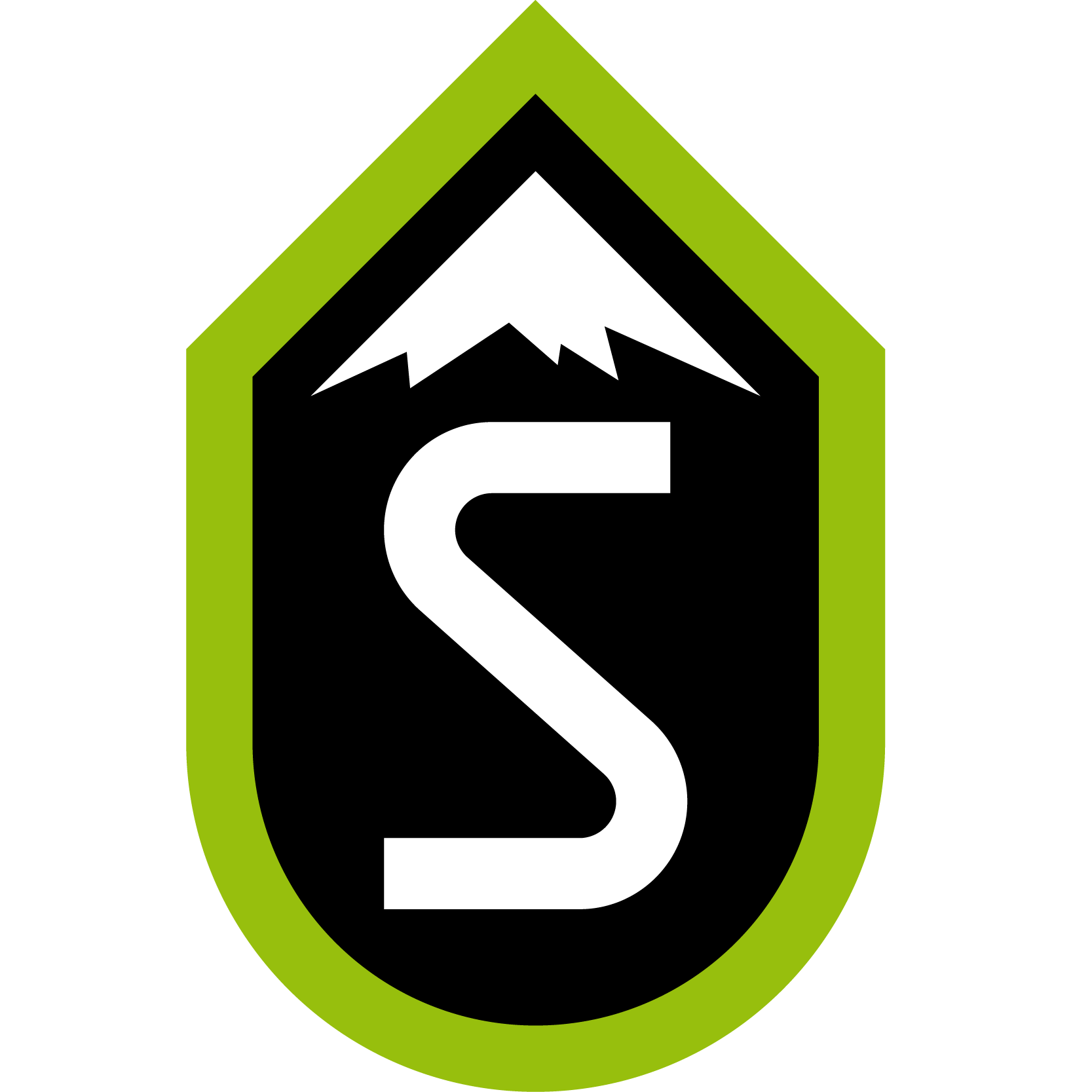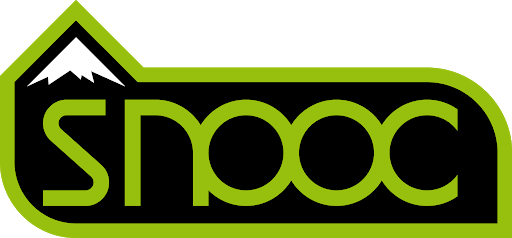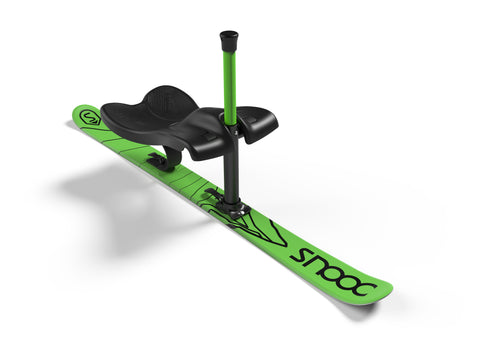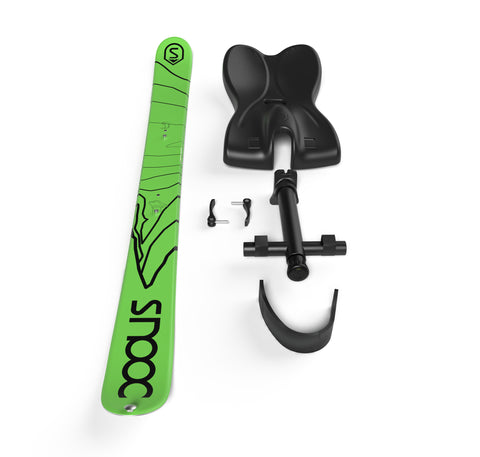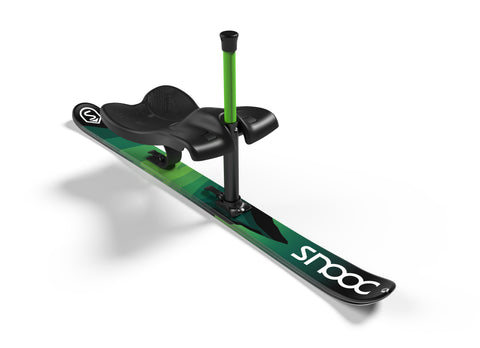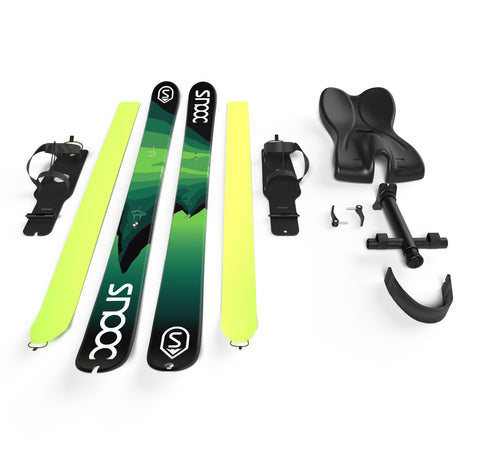HANDISKI AND ADAPTED SKI THE EQUIPMENT
A SKI ADAPTED
There are many materials to adapt the practice of skiing to each particular case. But generally, the equipment proposed for handiskiing aims to bring the adapted practice as close as possible to the "standard" practice, that is to say standing.
We have chosen to facilitate the practice of sliding, because for us the sensations and the pleasure experienced must be a vector of motivation to surpass oneself.
This innovative equipment does not propose to its user to look like a "skier", it proposes to him to live the glide! To discover the sensations in a few minutes, with a feeling of security to reassure him. With a success and a fast learning curve to give confidence and increase motivation.
How do you do it? By lowering the center of gravity to 20cm from the ground! The apprehension of falling decreases, the stability increases and the maneuverability is excellent !
Who better than Stéphane Tesdechi, hemiplegic can testify of this experience that he calls his ideal sport of sliding:-) :-)
This material is also intended for all people with physical difficulties.
It is sometimes possible to Knee pain can sometimes be remedied, but sometimes an accident or age leads to difficulties that cannot be compensated for by physical exercise.
The Snooc is then an interesting solution for skiing with osteoarthritis or with problems following an accident or a rupture of ligaments while skiing..
WHERE TO PRACTICE SNOOC SIT-SK I?
From the Northern Alps to the Southern Alps, including the Vosges, the Massif Central and the Pyrenees, all the mountain ranges now offer seated skiing for disabled people as well as infrastructures for handiski. Some resorts have even become the standard bearers of "skiing for all" with an offer of ski adapted for people with reduced mobility. The best ski resorts where handiskiing can be practiced, such as La Plagne, Combloux or Samoëns, have been involved for many years in the development and planning of handiski handiski in their resorts.
It is of course preferable to contact the resort or the tourist office to prepare your stay handiski handiski and to inform them when you arrive in order to live your experience of seated skiing..
More and more ski resorts are paying special attention to people with disabilities and are developing their mountain areas and offers handiski for this public with reduced mobility.
HANDISKI In France:
See the list of ski schools where you can discover adapted skiing supervised by professionals who will help you to quickly master handiski.
A video testimony ESF instructor in Chamonix who supervises the activity adapted skiinginSNOOC.
Initiated to sit-skiing, you can get information in the tourist offices and rent directly your equipment of adapted ski equipment in partner resorts and stores. et magasins partenaires.
HANDISKI In Norway :
Country recognized for the quality of the taking into account of the public in situation of handicap, the biggest gathering of winter adapted sport is called RIDDERRUKA and takes place in Beitostolen. https://www.ridderrennet.no/
More than 500 participants with disabilities come together to practice all the snow activities.
The Beitostoelen center has a wide range of equipment and in particular seated skis adapted to every need, including the SNOOCis part of it.

SNOOC In Switzerland:
Consult the list of Swiss resorts that offer SNOOC activities
SNOOC In Austria :
See the list of Austrian resorts that offer SNOOC activity
WHERE TO GET INFORMATION ABOUT WHEELCHAIR SKIING ?
You will find information on all adapted activities in France and in particular on handiskiing,sadapted skiing and the wheelchair skiingon the website: www.activhandi.fr
The Tessier website is obviously a mine of information, especially if you want to test your ski chair before buying it :
To learn more about the different handiskiingdisciplines , handiski, the innovations of sit-skiingandadapted skiingas well as the ski resorts with a program for the disabled,, the website ofFrench Handiskiing Federation is an important source of information.
 Chair Skiing Handiskiing Snooc
Chair Skiing Handiskiing Snooc
Extreme sit-skiing HANDISKI !
On track
Off-Track
UNDERSTANDING DISABILITY
“Most families have a member with a disability, and many able-bodied people help and care for a family member or friend with a disability
"Disability" is a broad term, encompassing :
- Impairments (alterations in organic functions or anatomical structures, such as paralysis or blindness)
- functional limitations (difficulties a person may have in an activity (walking, eating, etc.)
And which results from the interaction between a health problem and personal and environmental factors (source: ICF)
The environment of an individual has a significant impact on disability and the severity of the disability situation. Inaccessible environments are sources of disability, as they create barriers to participation and inclusion. (ex: winter sports)
We must consider disability as a continuum rather than seeing people with disabilities as a separate category. In fact, disability is a matter of degree: it is not a binary system (disabled/non-disabled).
ATTENTION:Disability can be experienced very differently by different individuals -> The disabled population is diverse and heterogeneous.
The associated health problems can be visible or not, temporary or long-term, static, episodic or degenerative, painful or inconsequential.
“Each person with a disability has his or her own preferences and reactions to disability."
WHO IS AFFECTED BY DISABILITY ?
When we think of disability, we usually think of wheelchairs and white canes... but that's just the tip of the iceberg.

Wheelchair users represent 0.1% of the French population, or 650,000 people. While reduced mobility concerns about 3.5 million peopleor , 5.3% of the population.
Many more people than we think! Not to mention that 12 million French people in total suffer from a disability and encounter significant difficulties in their daily activitiesthat , is to say 20% of the population and this can go up to 40% of the population if temporary disability situations are taken into account. Among them, 80% have an invisible disability.
In addition to physical disabilities, there are also mental and intellectual disabilities.
In fact, approximately 700 000 people suffer from an intellectual disability (learning difficulties, language, or mental retardation). To these must be added people with a psychological or cognitive disability. Even if their intellectual capacities are not altered, they have difficulty mobilizing them. This concerns in particular people suffering from Alzheimer's disease, epilepsy etc.
In France, 1 million people suffer from mental disabilities. Among these mental handicaps, we can find autism, Down's syndrome, Asperger's syndrome, or mental retardation.
SKIING, DISABILITY AND AGE
Of course, age plays an important role in the increase of motor and intellectual difficulties.
There is a significant increase in functional limitations from age 45 to 64. This is the age when ski resorts are losing many of their skiers.
We have had a lot of feedback from people with knee problems who are sad to leave the sad to leave the sliding sensations that it offers. The Snooc is a resurrection for them, both on the slopes and on the trail, the Snooc allows them to find a very good quality of sliding sensations.
THE ORIGINS OF DISABILITY
According to data for the year 2011, about half of the population recognized as disabled was disabled by birth or accident: 430,000 people were born with a disability (22% of the total), 360,000 were disabled by a work-related accident (19%), and 275,000 were disabled by another type of accident (14%). Another half have a health problem that is aggravated by age or work activity but is neither related to birth nor to an accident. For 80% of them, it is a question of physically demanding working conditions, 26% of stress, 15% of exposure to toxic products.

HANDISKIING ENCOURAGED BY THE LAW
The law of February 11, 2005 for equal rights and opportunities, participation and citizenship of disabled people is a reference. It requires establishments open to the public (ERP), such as stores, hotels, tourist offices, restaurants and of course ski lifts, to be accessible to disabled people. And thus participate in the development of handiski in French resorts by offering activities “"seated skiing" "as well as "standing ski” and infrastructures adapted tohandiski.

A study conducted by the Ministry of Labor in 2015 shows that 2.7 million people between the ages of 15 and 64 claim to have administrative recognition of disability, and 20 million French people suffer from a chronic disease, i.e. one third of the population.
HISTORY OF HANDISKIING
The roots of adapted skiingcan be traced back to Europe in the 1950's around the time of World War II.
There have been many groundbreaking introductions of adaptive ski equipmentover the years. The first ski stabilizers were created around 1970. They were followed by a list of other game-changing devices in the sport, including the first sit-ski in 1978 and the monoski in 1984. .
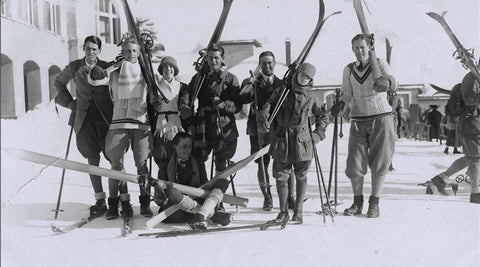
In the early 1990s, the adaptive skiing evolved from a recreational and rehabilitative sport to a more advanced organization of community programs and competitions. In 1992 adaptive skiing was accepted into the Paralympic Games for the first time.
